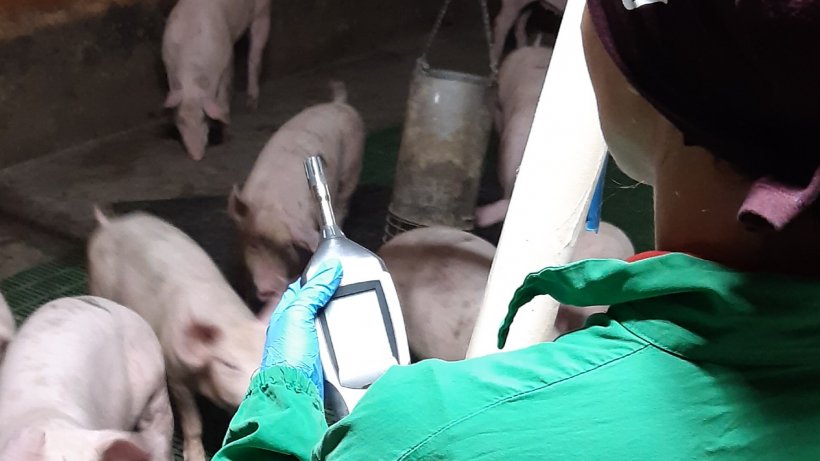As outlined in the first two articles of our series, our interviewed veterinary practitioners from the USA, Italy, Denmark, and Spain all agreed that antibiotic consumption is decreasing over time. However, we found specific differences in how they positioned their strategies.
Cano’s (Pipestone System, USA) key message is that Pipestone’s success in the reduction of antibiotic consumption is directly related to the implementation of key principles as outlined in the following 5 pillars:

- Biosecurity to prevent new disease introduction: Risk from people, transport, feed, materials, etc. has been addressed with science-based and feasible protocols. Areas of special focus include air filtration in highly pig dense areas, continuous training programs, and feed mitigation strategies.
- Disease elimination to work with high health sow farms when possible. By eliminating primary causes of disease (i.e. PRRS, PED, M. hyo, etc.) with cost-effective protocols, farms have improved health and decreased the usage of antibiotics. He believes this has been one of the main drivers for antibiotic reduction within the last years.
- Weaning pigs offsite and strict All In/All Out of growing pig facilities break the disease transmission cycle.
- Management of Gilt Development Units (GDUs) for health stability: Insuring that replacement gilts are adapted to the health of the sow farms early in life is a key factor for the stabilization of health in the system. Gilts enter their GDUs between 4-8 weeks of age.
- Antibiotic use and antimicrobial resistance tracking. Adequate data drives methodical planning and accountability. Pipestone’s PART and IMAGINE platforms help science-based decision making at the farm and system level.
Agerley (Porcus Veterinary Services, Denmark) agrees with Cano in the importance of the prevention and control of infections in the pig flow as an overall strategy to decrease antibiotic consumption. But from his perspective, he would add that adequate feed formulation and water quality are the two most important factors to consider whenever the reduction of antibiotics is attempted. He emphasized that “you can go far with very simple procedures”. Agerley focuses on: 1) good formulation using adequate levels of good quality proteins, ingredients of good digestibility, different fiber sources, usage of organic acids; and 2) good nutritional management procedures such as pre-weaning creep management to achieve the best intestinal health status at the time of weaning. As a group, the Porcus veterinarians promote the usage of acids in water to increase water hygiene and a health gut microflora.
Scollo (Suivet Veterinary Practice, Italy) highlights the importance of upgrading the biosecurity (i.e. showers/bench entries) in nursery and finisher facilities as well as ventilation management when focusing on the reduction of antibiotics. She feels that “Ventilation management, especially in nurseries, has been underestimated” as a tool in this effort. Her practice uses continuous monitoring of air variables in all of their client facilities to assess air quality (Image 1). Scollo also has experience testing alternative non-antibiotic therapeutic products in the nursery stage to prevent enteric pathologies. She has tested the use of algae as replacement for Colistin Sulphate or Zinc Oxide in nursery diets with good results. She has also experienced the use of essential oils, probiotics, and fatty acids and the results were, in some cases, encouraging. Sanz (UVESA, Spain) has positive experiences with the use of yeast in sows to improve the future gut health (i.e. microbiota) of piglets focusing on the early colonization of the piglet at farrowing. He also highlights the importance of developing a good technical service team profile that employs knowledgeable, young veterinarians that have learned and easily embrace the principles of antibiotic reduction from their first day.

Finally, everyone knows that we learn from both good and bad experiences. As they say, ‘the road is made by walking’. So we asked our swine veterinary practitioners to share useful lessons they learned along the way. Scollo and Cano agreed that removing antibiotics without properly controlling PRRSV in the sow farm was one of their biggest mistakes. Scollo is concerned about the new strains that are emerging in Italy and how difficult controlling them is in order to work with a stable flow. She felt that maybe this is still one of the main causes why not all Italian producers are ready to reduce the level of antibiotics used at the farm. Cano adds his concern regarding the aggressive prophylactic use of broad-spectrum antibiotics administered at the time of piglet processing. He believes that this practice prevents the piglet from getting exposed to bacteria and developing active immunity at weaning.



